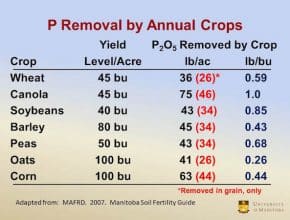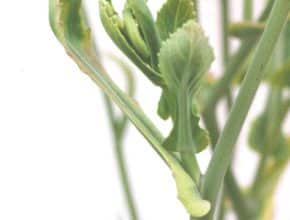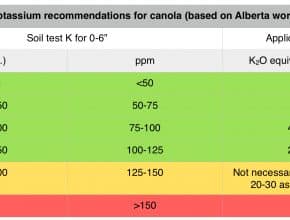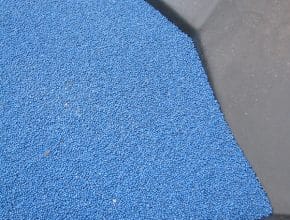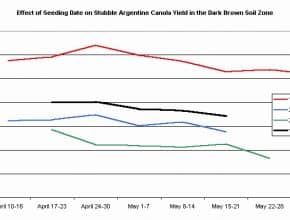Home / Canola Watch / Page 167
-
Canola removes more phosphate than other crops, and studies show that phosphate fertilizer rates have lagged crop removal for years. The result, says soil fertility expert Ross McKenzie, is that about 80% of Prairie fields are deficient in phosphorus…
-
Growers understand the need for S in canola, but more frequent production of canola and higher yields have been drawing down soil levels. Soil fertility expert Ross McKenzie estimates that at least 40% of soils across Western Canada are S deficient…
-
Sandier soils with low clay levels are more likely to be at or near deficiency levels. Ross McKenzie estimates that about 20 to 25% of Prairie soils are K deficient, and overall soil K levels are in a slow decline…
-
Spring soil tests are the most accurate in predicting the soil nutrient situation at seeding time. Labs may be able to provide results within a few days or a week, so spring tests can be done without holding up the seeding process…
-
Consider these factors... 1. Do you trust the data? 2. What traits do you need? 3. How do you assess yield potential?…
-
CR varieties deployed now to keep clubroot levels low is part of a long-term management approach to keep clubroot from ever reaching yield-damaging levels. CR varieties are recommended if growers are in communities where or near where clubroot is known to exist AND they…
-
Please take a minute to answer our three questions about the timing of your canola seed decisions…
-
Southern Alberta and southwest Saskatchewan may have soil temperatures adequate for canola establishment and just enough moisture for emergence, but should they seed now?…
-

